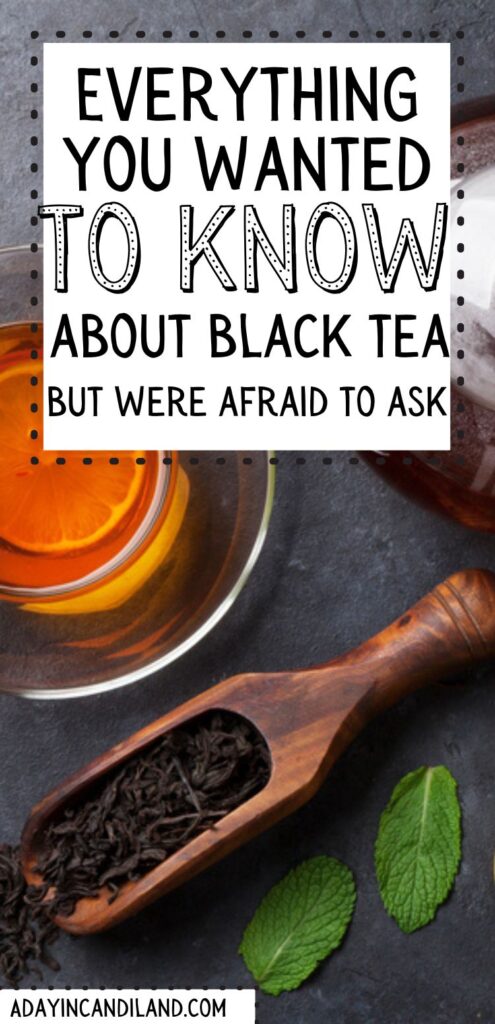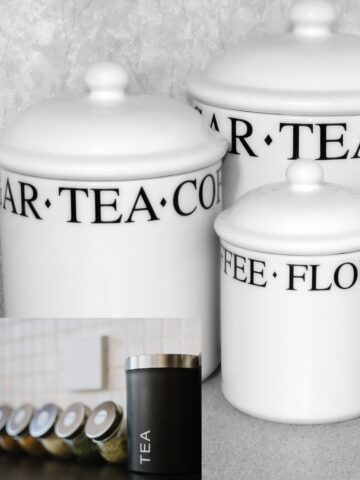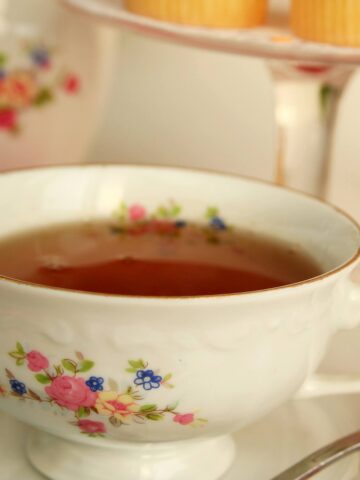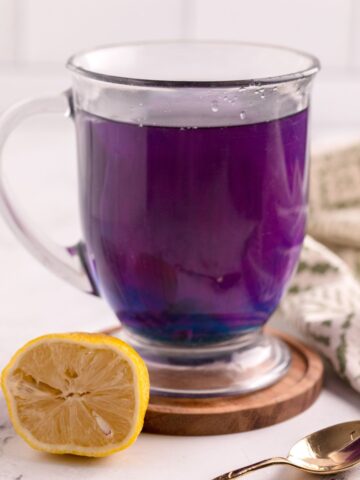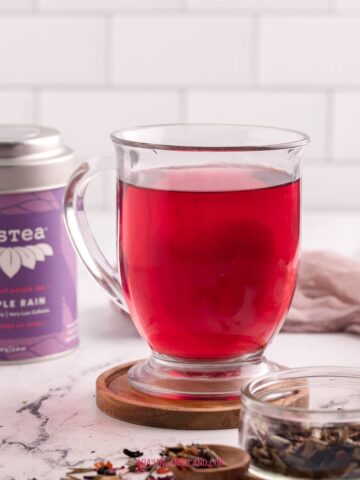One of the most popular and strongest teas is black tea. In this beginner’s guide to black tea, you’ll discover what it is, how it’s made and so much more.
Black tea is popular around the world because of its strong flavor and dark amber color. Everything you ever wanted to know about black tea is in this guide.
- Read about the Beginner’s Guide to Green Tea Here!
- Read about the Beginner’s Guide to Chai Tea Here!
- Read about the Beginner’s Guide to Herbal Tea Here!
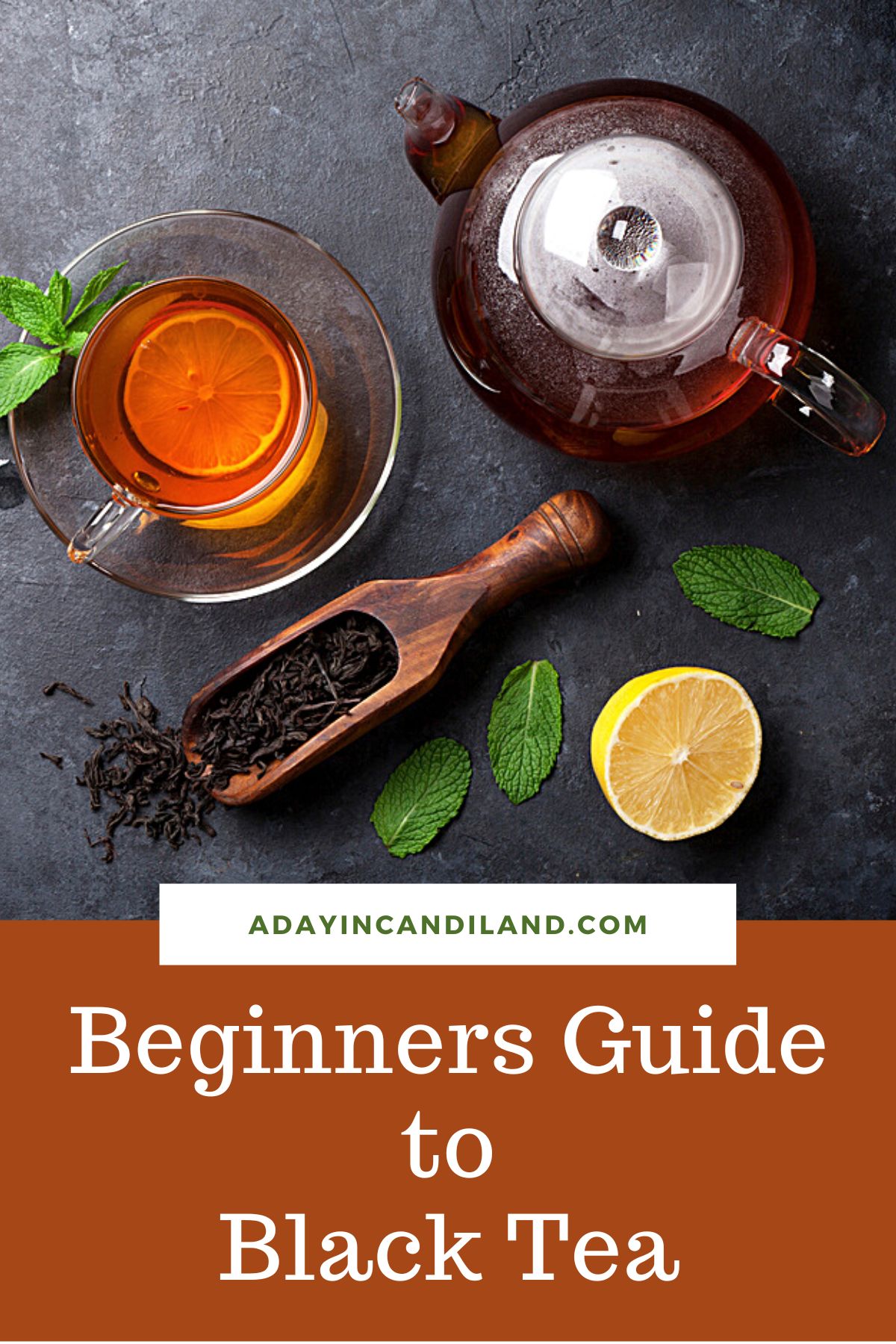
Jump to:
*This post may contain affiliate links. If you make a purchase, I get a small commission. Please see my disclosure policy for details
What is Black Tea?
Black tea is more oxidized than oolong, yellow, white, and green teas. This oxidation process is what gives it a stronger flavor than other teas. Since it has such a strong flavor, it is one of the most popular types of tea in the West.
Black tea comes from the Camellia sinensis plant. The black tea leaves from this plant are allowed to completely oxidize before they are processed and dried and that’s what gives it the signature taste profile.
All types of tea (except herbal teas) are made from this plant. How they harvest and process the tea leaves is what sets black tea apart from the other types of tea.
Of all the types of tea in existence today, black tea has the oldest history. It was discovered in China in the mid-17th century and was soon introduced to Europe and the Middle East after that.
Black tea has more caffeine than other varieties but it still has less caffeine than coffee.
How Is Black Tea Made?
There’s so much more to making and processing black tea than just picking tea leaves and letting them dry – even though that is the first step!
Step 1: Leaves Are Withered
The very first step is to pluck the tea leaves. Then, they spread the leaves out on large tarps or mats and withered to remove the moisture content.
They either lay them out in the sun and let nature do the hard work or they blow hot hair over the leaves.
Step 2: Leaves Are Rolled
There are two different ways tea leaves are processed at this step – Orthodox or CTC.
For Orthodox tea, they roll the tea leaves by hand or with a cylindrical rolling table or rotor vane. This method is usually used for higher-quality leaves and in more expensive teas. These leaves are used in loose-leaf teas or tea cakes.
CTC stands for Crush, Tear, Curl. For this method, the tea leaves are shred using a rotor vane into very fine pieces that are all the same size. These tea leaves are used in lower-grade teas.
Step 3: Oxidation
This is the step that sets black tea apart from the other types of tea. For this step, the leaves are oxidized under controlled conditions. They strictly control the temperature, oxygen levels, and humidity to achieve the best results.
This is the step that gives the black tea leaves a dark color, unique flavor, and aromatic properties.
What is oxidation? That’s the process where enzymes in the tea leaves react with oxygen and gradually turn the leaf dark black.
Step 4: Drying
Finally, the tea leaves must be dried to completely remove all the moisture from them
After they are completely dried, they are sorted into tea grades – whole leaf grade, broken leaf grade, fannings, and dust.
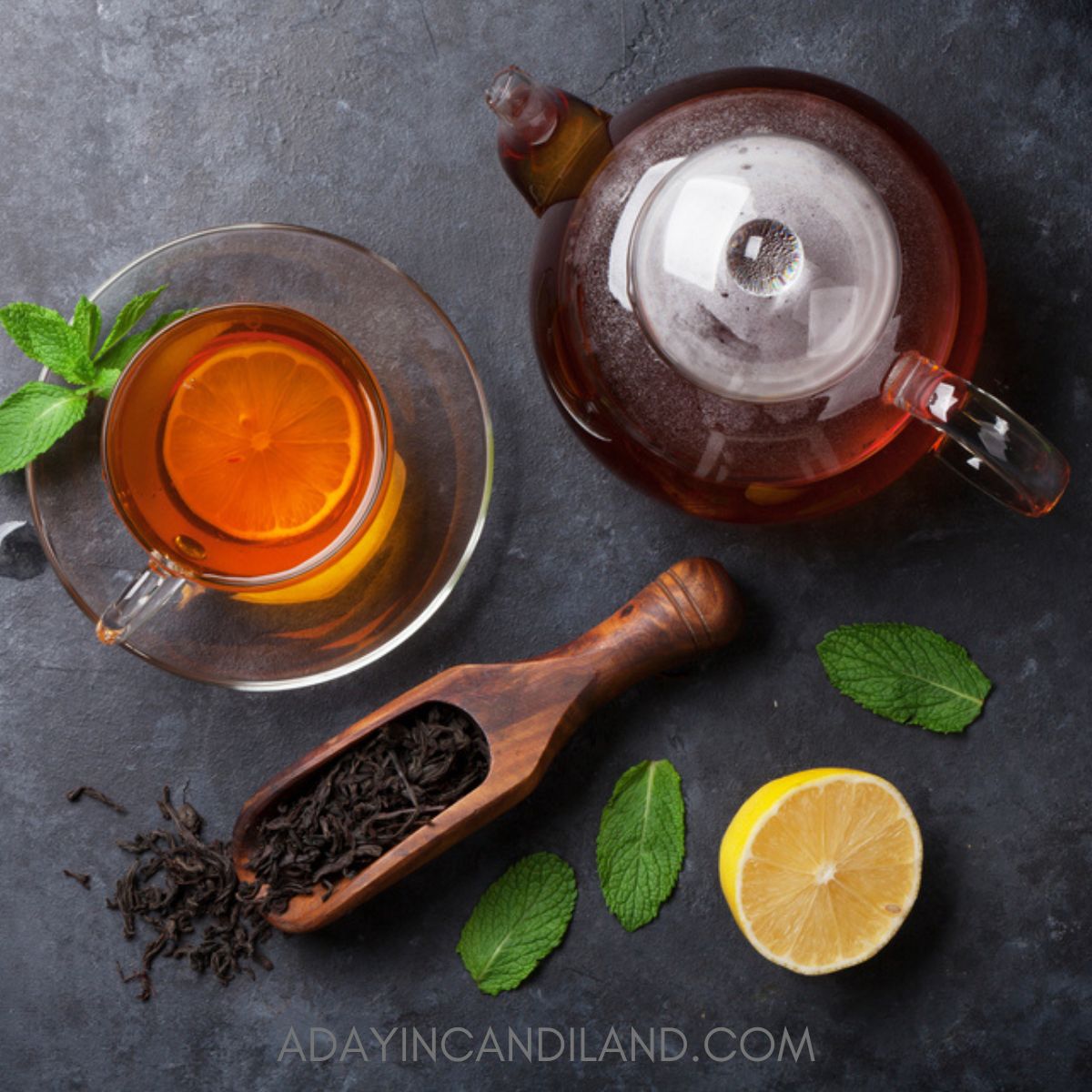
Beginners Guide to Black Tea Health Benefits
In addition to tasting Heavenly, black tea is actually really good for you too! In fact, it has been used for centuries medicinally. Just look at this long list of health benefits that are proven by science.
Lower Risk of Heart Disease
Scientific studies show that black tea is beneficial for cardiovascular or heart health. These tea leaves have anti-inflammatory properties that help reduce inflammation in your heart’s arteries and blood vessels – this is how it helps lower your blood pressure.
It’s also been shown to lower your risk for both stroke and high cholesterol. Even though studies show that tea plays a minor role in heart disease prevention, it’s still important to note.
Aid in Weight Loss
There are also studies that show a connection between black tea and weight loss. No, it isn’t a magic drink that will instantly shed pounds, but it encourages overall wellness that will help you lose weight easier.
The flavonoids in tea affect how it tastes. These compounds also prevent inflammation-induced obesity and lower visceral fats.
It’s also really smart to replace high-calorie drinks like soda with unsweetened tea because black tea is low in calories.
Plus, even though it has less caffeine than a cup of coffee, it can still give you a boost of energy to help you power through your workout.
Black Tea For Sunburns
The antioxidants in black tea aren’t just good for you when you digest it, it’s useful when you apply it to your skin too. People use it to ease the pain and discomfort of sunburns.
To do this, soak several black tea bags in cool water and let the tannins release. After the water darkens, apply the tea bags to your sunburn. You can also soak a towel in the cool tea water and use that on your skin.
The black tea removes the heat and pain pretty quickly and the tannins reduce the inflammation and help restore your skin’s pH balance.
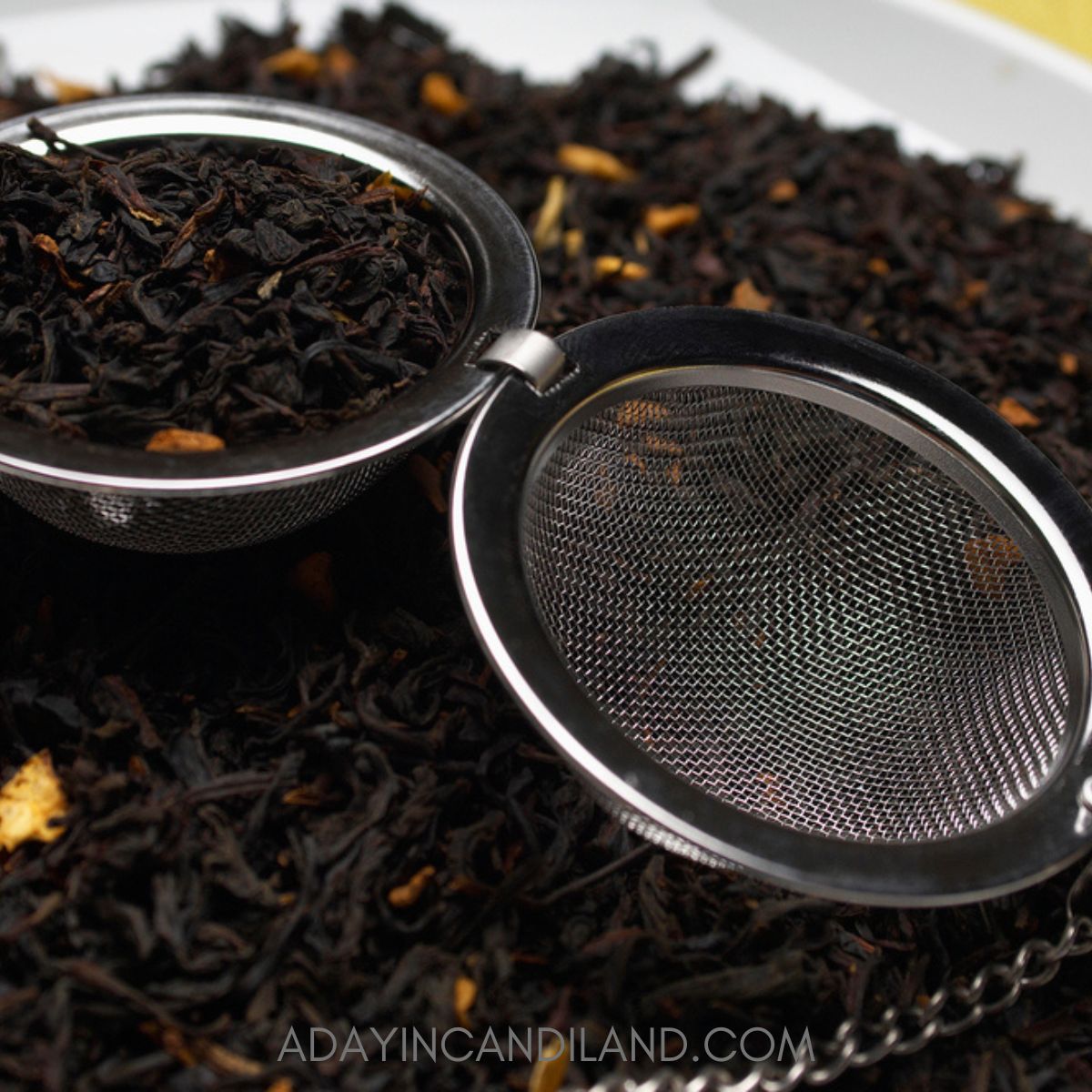
Help Prevent Cancer
Black tea has antioxidants called polyphenols that fight free radicals. Free radicals are compounds that are responsible for breaking down healthy cells. The polyphenols in black tea help to fight those free radicals and lower the risk of prostate cancer and ovarian cancer.
It’s important to note that the reduced risk of cancer has not been established by all medical studies. Most of the research on this topic was conducted on animals or in cells in a lab. There aren’t any human trials confirming the results yet.
Black Tea For Hair
Another obscure benefit of black tea is that the tannic acid can darken your hair over time. This is useful if you are trying to naturally cover the greys.
Here’s how to do it.
Brew a cup of very strong tea – 6 tea bags in 6 tablespoons of water. Let the tea seep and brew. After it’s really dark, let it cool and pour this tea on your hair. Let it soak for up to 30 minutes before you rinse it out with warm water.
Black Tea Pregnancy
It is safe to drink black tea in moderation during pregnancy. Women are often advised to avoid caffeine during pregnancy, but black tea has such a small amount of caffeine that it’s safe to drink 1-2 cups of black tea a day.
If you are pregnant, discuss this with your doctor and limit how much black tea you drink to stay safe.
Boost Immunity
Black tea contains tannins. That’s what is responsible for the distinct taste. These tannins are also full of properties that fight viruses like influenza.
It also contains alkylamine, which has a direct connection with boosting your immune system. Lots of people enjoy drinking a hot cup of tea with lemon and honey when they are feeling under the weather.
More studies are needed to confirm how much it helps your immune system, but it’s a very common holistic method of fighting common viruses that drag you down.
Calm Digestion Issues
Black tea is also known to help aid digestion. This is because black tea is made with components that promote the growth of healthy gut bacteria.
If you suffer from Crohn’s, IBS, or any other digestion issues, talk to your doctor about how supplementing with black tea can help your body. It’s known to soothe and decrease intestinal activity (like diarrhea).
Types of Black tea
Most black teas are cultivated in China and India. Sri Lanka does make the famous Ceylon tea and Africa produces certain varieties too. The most common teas that you’ll discover come from China or India.
Let’s look at the best varieties from these countries.
Indian Black Tea Varieties
There are two very popular types of tea that come from India – Assam, and Darjeeling. They taste different and have different properties even though they are both black teas.
Assam
Assam black tea is named after the region where it is grown, Assam region. The tea plants grow in the beautiful foothills of the Himalayas along the Deccan plateau.
This tea has a malty flavor and a rich body. It is usually used in black tea blends and flavored teas.
You’ll notice Assam tea in lots of Chai and Earl Grey tea blends. It’s one of the most common types of tea that people around the world enjoy.
Darjeeling
Darjeeling tea is grown in the West Bengal area of Inda. It has a thin body with fruity and floral notes. It also has a very unique muscatel flavor. If you ever find a Darjeeling tea, it might also have a mixture of green and oolong tea leaves in it.
Since this tea has such a well-rounded and complex flavor, it has been the staple choice of royalty around the world. In fact, lots of people enjoy drinking Darjeeling tea without any extra additives.
Chinese Black Tea Varieties
There are four main types of tea grown in China – Keemun, Dianhong, and Yingdehong tea. All of them have different flavor profiles and uses too.
Keemun Tea
Keemun tea has a light body with fruity notes. It tastes similar to unsweetened chocolate. Some people say the aroma smells like fresh orchids.
When it’s brewed, it creates a distinct red cup of tea. People love enjoying this tea with baked goods as a breakfast tea.
Dianhong Tea
Dianhong tea is produced in the Yunnan province. This is one of the most affordable of high-quality teas from China. It’s known for having golden tips in the dried tea leaves.
It has a fresh, floral aroma with a thin but sweet flavor. For this reason, it’s used in lots of tea blends.
Yingdehong Tea
This tea is grown in the Yingde, Guangdong province. This variety of tea is mostly exported by China all around the world.
It has a cocoa-like aroma and a sweet aftertaste.
It has many other names too. It’s also known as Yingde Hongcha in Chinese, other names for the tea include Ying de Black, Ying Hong, and Guangdong Black tea.
Lapsang Souchong
One of the most unique black teas out there is the Lapsang Souchong. It is so unique because it is harvested and processed by hand in China. People call this the whiskey of black teas because it has such a unique flavor.
The process is fascinating. The black leaves are fired over open pine fires. This is what gives it the smoky flavor that it’s known for. It has notes of tobacco that will give you a pleasant warming sensation when you drink it.
Popular Black Tea Blends
Since it has such a pleasant and strong flavor, black tea is used in lots of blends. There is a crazy amount of different tea blends out there. Most of them fall within these four types of black tea blends.
Chai Tea
Chai tea originated in India. The name “chai” is actually the Hindi word for tea.
There isn’t just one blend that makes something taste like chai tea. Chai tea recipes vary across continents and cultures. In general, chai tea is black tea mixed with a combination of cinnamon, cloves, ginger, and peppercorns.
This spiced tea mixture is usually very strong and so people combine it with milk and sugar or honey.
Earl Grey
Earl Grey tea is extremely popular around the world and is known as British tea. It’s a flavored tea – the black tea leaves form the base of it. It also has oils from the rind of bergamot orange mixed in.
Where did the name Earl Grey come from? One story explains that a Chinese mandarin tea master blended the first cup of this for Charles Grey, the 2nd Earl of Grey and Prime Minister of the United Kingdom from 1830-1834. The story holds that the tea master uses bergamot as a flavor to offset the lime flavor from the well water.
English Breakfast
Black tea is used as a breakfast tea because it tastes the best with a variety of flavors.
Assam tea is the most popular black tea variety and is used in English Breakfast Tea. It’s also used in Chai tea blends.
English Breakfast tea varies from brand to brand. Some use a variety of different tea leaves and others use just one. It’s usually just black tea leaves and has a very strong flavor.
Fruit and Herbal Blends
Finally, you’ll also find a plethora of different varieties of fruit and herbal blends of tea. A lot of them use some form of black tea leaves as their base because it gives the tea a flavor depth that other types don’t have.
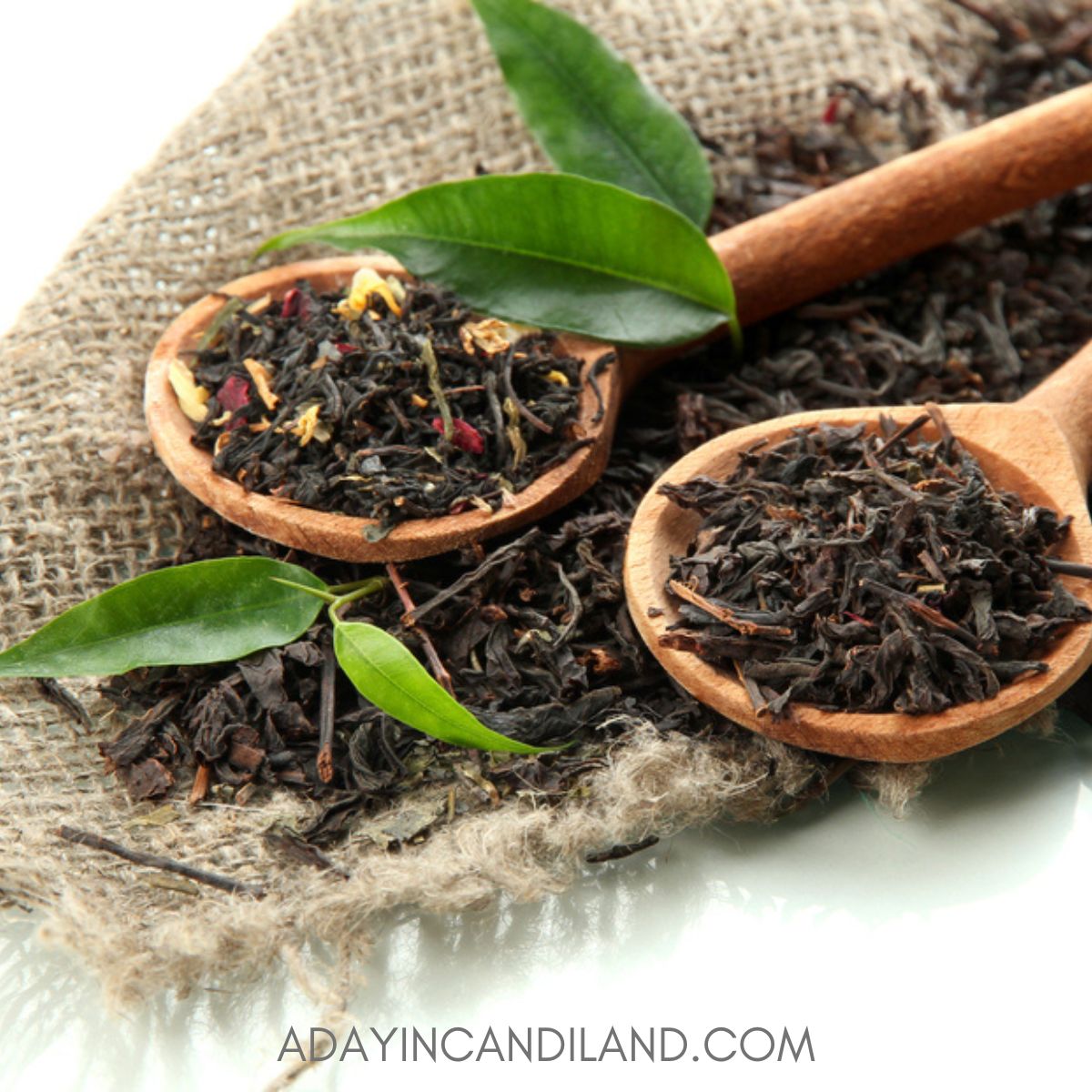
How To Brew Black Tea
When you are ready to enjoy a nice hot cup of black tea, this is how long to steep black tea and brew the perfect cup.
The way to brew it depends on the type of tea. Let’s look at all the different ways you can brew black tea.
How To Brew Loose Leaf Tea
Set your loose-leaf tea in a sachet or tea infuser. It’s best to put about 1 teaspoon of loose-leaf tea for every 8-10 ounces of water.
If you don’t have a sachet or tea infuser, just add the loose tea leaves directly to your cup and pour the water over them.
Fill your cup with boiling water and let the sachet or infuser sit in the cup (or pour the water over the leaves in the cup).
Let them steep for about 5 minutes. After 5 minutes, remove the sachet or strain your cup of tea.
What To Add To Black Tea
Since black tea has such a bold and brisk flavor, many people add things to it to soften the taste. Some add milk, others like to stir in honey, sugar, or lemon.
Beyond this simple combination, there is a huge variety of drink recipes you can create with tea and milk. Try adding a dash of vanilla syrup and a sprinkle of cinnamon to your milk and black tea. It tastes amazing!
Some people also enjoy sprinkling a few flower petals in their tea. Try sprinkling ginger – this herb is great for your stomach.
How Black Tea Compares To Coffee
People drink black tea and coffee in much the same way. Instead of roasting coffee beans, tea leaves are dried and oxidized. Both beverages are made by a brewing process of seeping them in hot water.
Black tea is less acidic than coffee. It’s much easier to drink a cup of black tea unsweetened than it is to drink a cup of black coffee.
Black tea has the most caffeine compared to other varieties of tea. It still has less caffeine than a cup of coffee. Black tea has around 45-70mg of caffeine per cup and coffee has about 100mg of caffeine in a cup.

